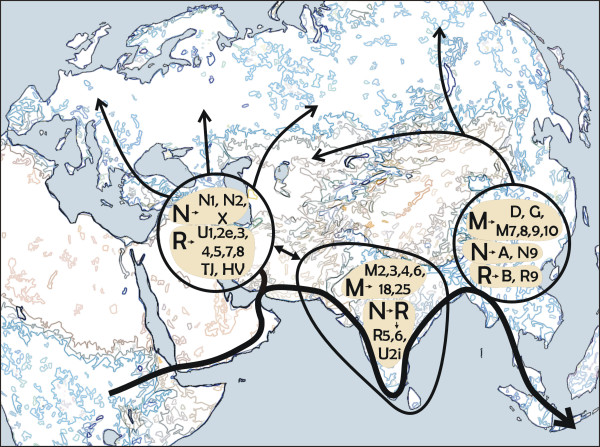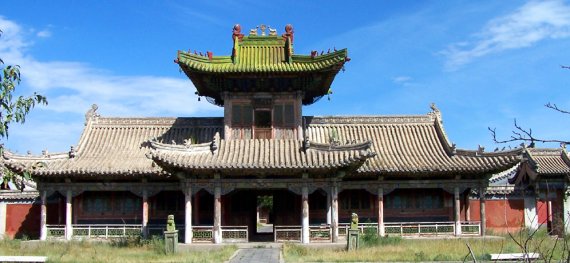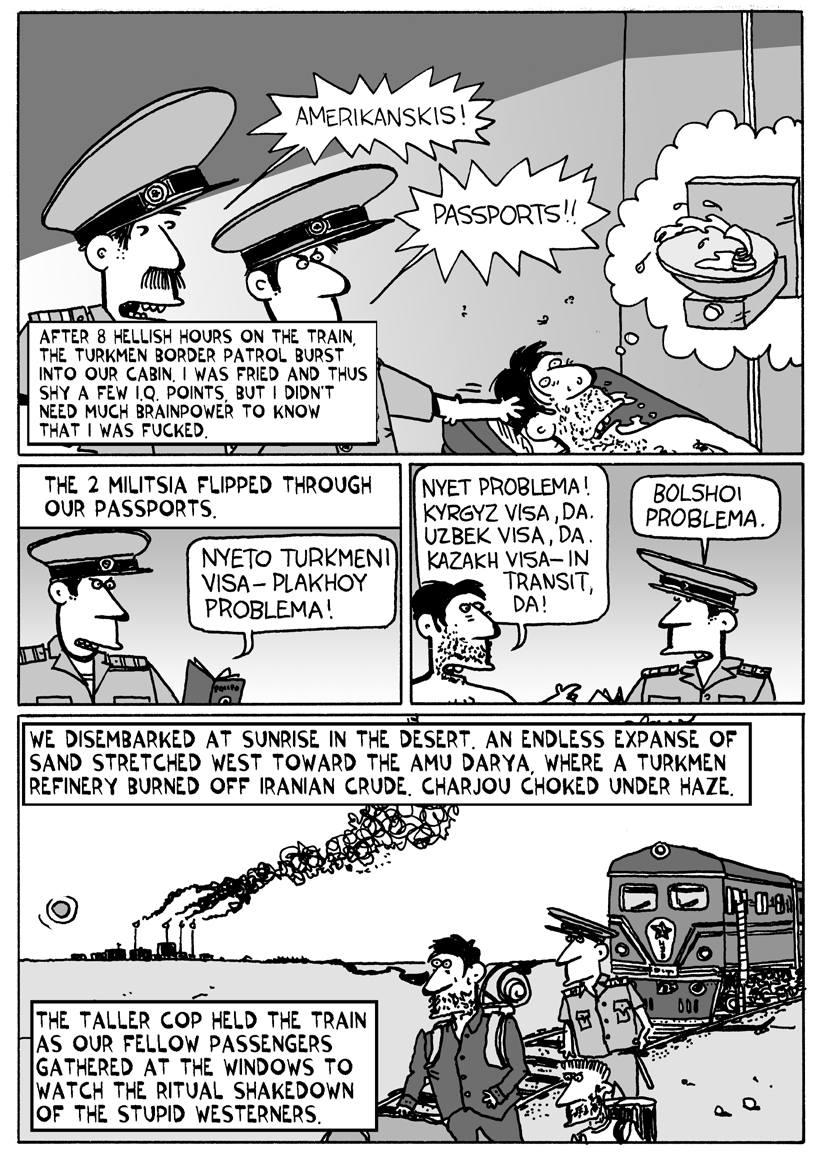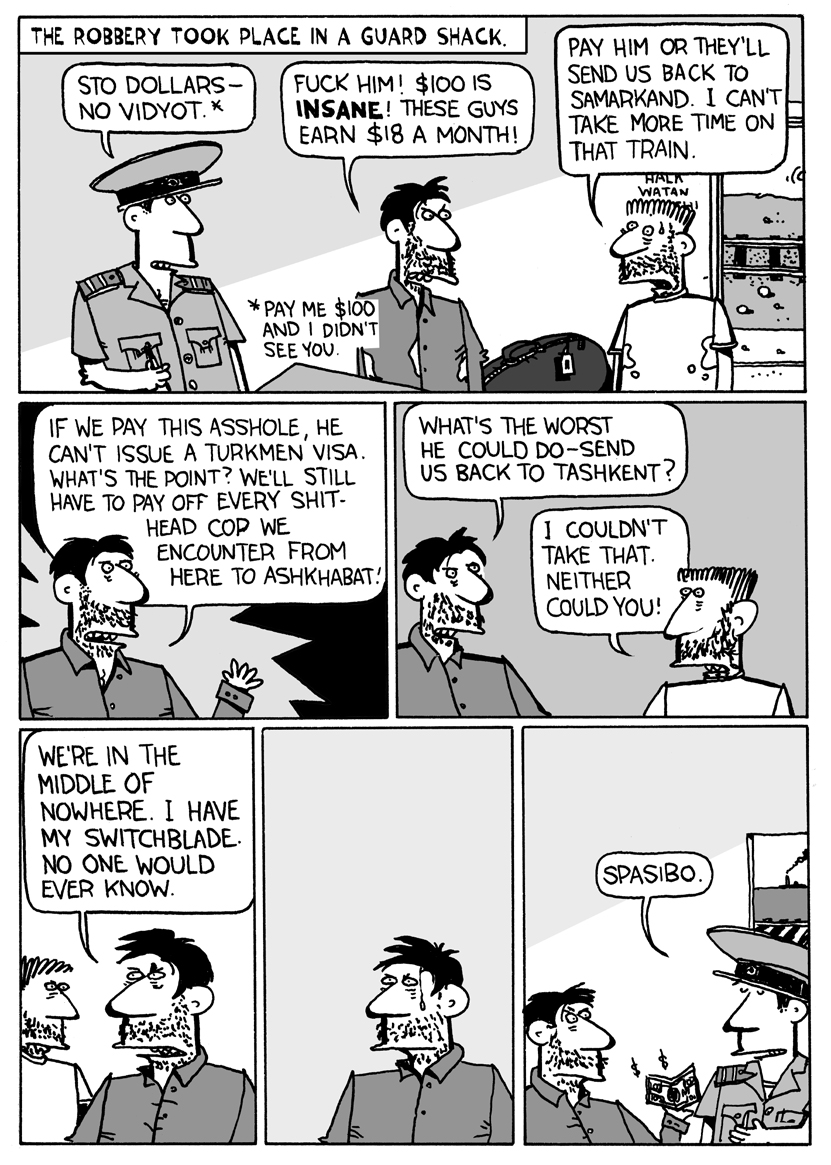COURSE OUTLINE
| Instructor: |
Dr. Ewa Wasilewska, Associate Professor/Lecturer, Dept. of Anthropology. |
| Contact information: |
Office: Stewart 101. By
appointment only.
Office phone: 801-581-6251. Please call between 8:00 a.m. and 5:00 p.m. and leave your name and a phone number so the instructor can call you back. Telephone appointments are acceptable.
Home phone: 801-596-3105. For emergencies only unless a telephone appointment is arranged.
Email: Mruczek@AOL.com
|
| Time: |
Thursdays, 2:00 - 5:00 p.m. |
| Location: |
Campus ST 104 |
| Course description: |
The most famous highway of antiquity, the Silk Road, has never lost its importance as one of the most strategic areas in the world. While many ancient cities and stops on the Silk Road no longer enjoy their days of glory, many new ones have emerged and become destinations themselves. Central Asia's enormous reserves of oil and gas make this region more than desirable for all major world powers and as volatile as it was in the past. Though natural resources and commodities traded along this Road have changed, the importance of the heartland controlled by nomads and/or those of nomadic traditions has remained constant. “Whoever controls the Heartland controls the world” as Halford Mackinder, a founder of the so-called Geopolitics (1904, “The Heartland Theory”) stated many years ago. Since then this axiom has been adjusted and modified by others but its main message is the same: whoever controls the ancient road(s) from China, through Central Asia and the Middle East, to Europe controls the world.
This course will introduce students to this Heartland, its history and archaeology, its people and their customs, and its strategic importance in the world. |
| Disclaimer |
Some of the writings, lectures, films, or presentations in this course may include material that conflicts with the core beliefs of some students. Please review the syllabus carefully to see if the course is one that you are committed to taking. |
| Course objectives |
At the end of this course students will:
1. Acquire knowledge and understanding of geopolitics of Eurasia and its historical outline focusing on the last two thousand years.
2. Be able to make basic chronological, political, economic and cultural connections between all parties involved throughout the region.
3. Be able to identify and discuss mobility issues of the region as impacting the global community.
4. Be introduced to the mosaic of people and cultures from the earliest written records to the present day.
5. Learn about origins of such important groups of people as the Indo-Europeans, Altaic, Semites, and the Chinese.
6. Acquire knowledge and understanding of great nomadic empires that controlled the world in the past.
7. Be able to identify and discuss the potential indefensibility of the region where long-lasting governments are more of an anomaly than of a rule.
8. Understand the region’s crucial position in world politics and its importance in the strategic planning of American foreign policy.
|
| Content Overview |
This course will introduce students to one of the most interesting and controversial subjects in the social sciences and humanities – nomadic migrations occurring over the millennia in Eurasia. The concept of “nomadism” and its different forms in the region will be explained and discussed within geographical, historical, socio-economic, political and cultural contexts during the last six thousand years but especially focusing on the modern era. Relevant data from China, Central Asia, Mongolia, Siberia, the Middle East, India and Europe will be presented and discussed. The course will be richly illustrated with the unique slides and footage obtained by the instructor during her research in the area. Additional slides and films will be used to help students understand the harsh reality of the area and its enormous potential for the future development. |
| Teaching and Learning Methods |
This course is a combination of lectures and discussions. While each meeting will be illustrated with various visual aids, students will also be given a list of specific movies to browse through to better comprehend the discussed topics. While students are encouraged to initiate and participate in all discussions, they must remain respectful of all classmates and the professor. |
Evaluation Methods |
This course requires patience and a fair amount of memorization due to the expansiveness of the area and mélange of its people. Students are expected to:
-
Attend class meetings.
-
Do their readings in advance so they can fully participate in any discussions.
-
Take all required exams on time. Upon a valid request, special arrangements might be made with the professor (e.g., a different exam date).
-
Complete and turn in on time their assignments and/or papers.
-
Offer their opinions and argue their points. All must be done in good and edited English.
-
NO PLAGIARISM OR CHEATING IN ANY SHAPE OR FORM (see below: “Academic Misconduct”).
|
Exams, Assignments and Grades: |
Undergraduate students: there are going to be three in class exams and a research paper. Each counts for 25% of the final grade. The last 25% is allocated for a research paper – a student’s independent research on a topic of his/her choice but approved by the professor.
Graduate students: Same requirements plus an in-class presentation on one of the last two topics listed on this syllabus. % distribution: all 20%
Research paper: 10 to 12 pages (or more; 20 pages or more graduate students) plus bibliography (scientific articles and books; must include no less than 5 different sources in addition to class material; no Internet sources unless they are official, science-based publications). Topic: your selection but must be approved by the instructor.
There won’t be any extra-credit assignments in this class. Each exam and/or assignment and/or paper will be graded using the Letter-Grade scale (“A” as the highest, “E” as the lowest [no-pass] grade). The final grade will be calculated accordingly by setting up values of the Letter-Grade scale using the 4-Point scale. |
Required Readings: |
All required articles, chapters from different books, etc., are listed under specific topics discussed during the semester. All of them are available at Marriott Library Reserve Desk through electronic reserve or as hard copies.
|
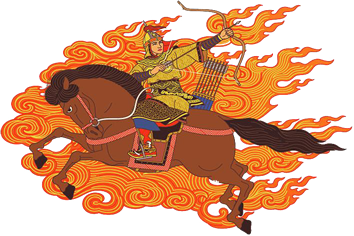
WEEK
# 1 - August 29, 2013
Course informat
Eurasia: defining the region. Geopolitics.
Readings for Week # 1:
For introduction to geography of the area see:
Iseri, Emre (2009): The U.S. Grans Strategy and the Eurasian Heartland in the Twenty-First Century. In Geopolitics. 14. Pp. 26-46.
Major, John (2013): Geographical Setting of the Silk Roads. In Asia Society. http://asiasociety.org/countries/trade-exchang/geographical-setting-silk-roads?page=0.0
OPTIONAL:
For the importance of the region in modern politics see:
Cohen, Ariel: Introduction. In Eurasia in Balance: the U.S. and the Regional Power Shift. Ariel Cohen, ed. Ashgate Publishing Limited, England, U.S.A. 2005. Pp. 1-8.
For the importance of the region in politics of oil and energy see:
Amineh, Mehdi P. & Henk Houweling: II. Caspian Energy: Oil and Gas resources and the Global Market. In Central Eurasia in Global Politics. Conflicts, Security, and Development. Mehdi Parvizi Amineh & Henk Houweling, eds. Brill: Leiden Boston. 2005. Pp. 77-92.
|
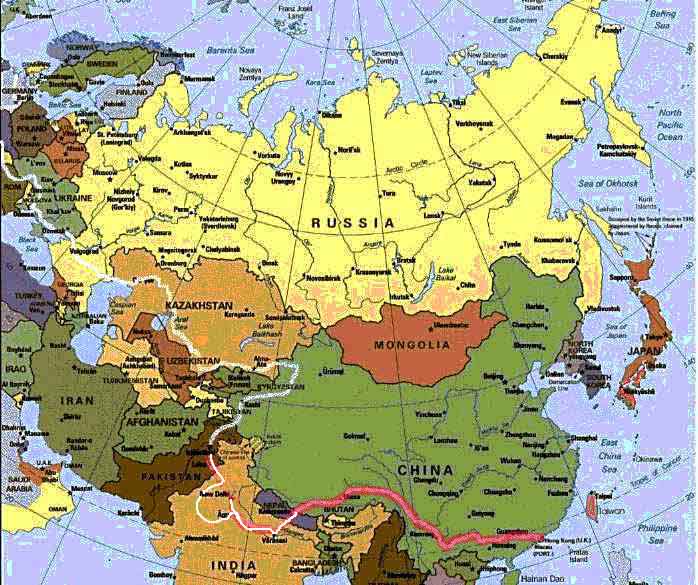 |
|
| |
|
|
WEEK
# 2 - September 5, 2013
WEEK
# 3 - September 12, 2013
WEEK
# 4 - September 19, 2013
WEEK
# 5 - September 26, 2013
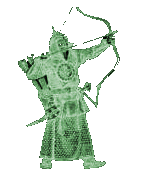 |
|
EXAM!!!
2 hours. You are allowed to bring an index card (3 X 5) with whatever notes you can fit on one side (one side only!) to use during your exam.
|
|
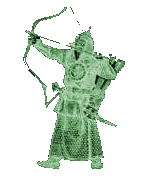 |
WEEK
# 6 - October 3, 2013
Defining nomadism: different land, different forms of nomadism.
Readings for Week 6:
Barfield, Thomas J: 1. Introduction (pp. 1-18). 4. The Good Shepherds: Pastoral Tribes of Southwest Asia (pp. 93-130). 5. The Horse Riders: Nomads of the Eurasian Steppe (pp. 131-179). In The Nomadic Alternative. Prentice Hall. London. 1993.
Castillo, Jorge Silva: Nomadism through the ages. In A Companion to the Ancient Near East. Daniel C. Snell ed. Malden MA: Blackwell. 2005. Pp. 126-140.
Renfrew, Colin: Pastoralism and Interaction: Some Introductory Questions. In Ancient Interactions: East and West in Eurasia. Katie Boyle, Colin Renfrew & Marsha Levine, eds. McDonald Institute for Archaeological Research. Cambridge. 2002. Pp. 1-9.
|
|
 |
WEEK
# 7- October 10, 2013
The Indo-European mystery: in search of the homeland and its people. From the East to the West or…?
Readings for Weeks 7:
Mallory, J. P. : 1. The Discovery of the Indo-Europeans (pp. 9-23). 6. The Indo-Europeans Homeland Problem (pp. 143-185). In In Search of Indo-Europeans: Language, Archaeology and Myth. Thames & Hudson: London. 1991.
Rolle, Renate: Royal Tombs and Hill Fortress: New Perspectives on Scythian Life. In The Golden Deer of Eurasia. Perspectives on the Steppe Nomdas of the Ancient World. Joan Aruz, Ann Farkas, and Elizabetta Valtz Fino, eds. The Metropolitan Museum of Art: New York. 2006. Pp. 168-181.
Wayland-Barber, Elizabeth: I. Mystery Mummies (pp. 17-21). 2. A Man with Ten Hast (pp. 22-45). 3. Plus Three Women and a Baby (pp. 46-69). In The Mummies of Ürümchi. W.W. Norton & Company: New York and London. 1999. |
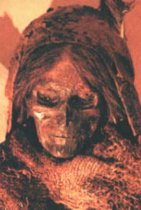 |
 |
WEEK
# 8 - October 17, 2013
FALL BREAK!!!

WEEK
# 9 - October 24, 2013
| The Hsiung-nu and their impact on the rise of China Proper. The Silk Road.
Readings for Weeks 9:
Barfield, Thomas: Steppe Empires, China, and the Silk Route: Nomads as a Forces in International Trade Politics. In Nomads in the Sedentary World. Anatoly M. Khazanov and André Wink, eds. Curzon Press. 2001. Pp. 234-249.
Boulnois, Luce: Ch.1. Serica (pp. 33-45). Ch. 2. The Land of Silk. (pp. 47-58). In Silk Road. Monks, Warriors & Merchants on the Silk Road. W.W. Norton & Company, Inc.: New York. 2006.
Chazan, Michael: Shang China. In “World Prehistory and Archaeology: Pathways through Time.” Pearson Education. 2008. Pp. 350-355.
Di Cosmo, Nicola. Those Who Draw the Bow. The Rise of the Hsiung-nu Nomadic Empire and the Political Unification of the Nomads. In Ancient China and Its Enemies. The Rise of Nomadic Power in East Asian History. Cambridge University Press. 2002. Pp. 161-205.
Franck, Irene M. & David M. Brownstone: On the Road. In The Silk Road: A History. Facts on File Publications: New York. 1986. Pp. 7-32.
Check also: http://www.ess.uci.edu/~oliver/silk.html and http://www.chinaknowledge.de/History/Myth/shang.html |
|
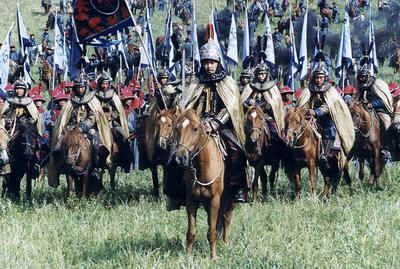
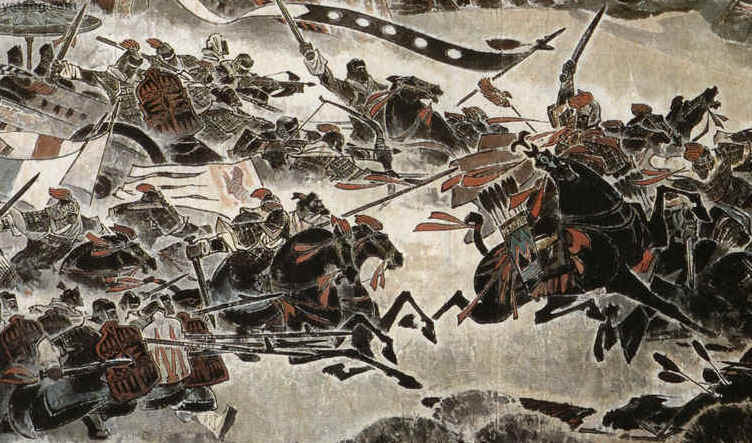
|
WEEK
# 10 - October 31, 2013
The Silk Road -- continuation. Same principles, different people, and different commodities.
Readings for Week 10:
Franck, Irene M. & David M. Brownstone: 8. A Second Flowering (pp. 185-216). 9.The Age of the Great Khans (pp. 217-235). 10. Pax Mongolica (pp. 237-262). 11. Cities in the Sand (pp. 263-280). In The Silk Road: A History. Facts on File Publications: New York. 1986.
For an interesting story focusing on every day life along the Silk Road in the 9th century see:
Whitfield, Susan: The Courtesan’s Tale. Larishka, 839-890. In Life Along the Silk Road. University of California Press: Berkeley, Los Angeles.1999. Pp. 138-154.
|
|
 |
WEEK
# 11 - November 7, 2013
 |
|
EXAM!!!
2 hours. You are allowed to bring an index card (3 X 5) with whatever notes you can fit on one side (one side only!) to use during your exam.
|
|
 |
WEEK
# 12 - November 14, 2013
The Altaic empires of the steppe. Challenging the “border” phenomenon. Part 1.
Readings for Weeks 12 and 13:
Grousset, René: The Ephthalite Huns. The Huns in Europe: Attila (pp. 69-79). 2. The Early Middle Ages: T’u-chüeh, Uigur, and Khitan (pp. 80-140). II. The Jenghiz Khananite Mongols (pp. 189-325). 11. Tamerlane (pp. 409-465). In The Empire of the Steppes. A History of Central Asia. Rutgers University Press: New Brunswick, New Jersey, and London. 1999 (sixth edition). |
|
 |
WEEK 13 - November 21, 2013
The Altaic empires of the steppe. Challenging the “border” phenomenon. Part 2.
Readings for Week 13: see above.
Last day for a draft of your research paper. |
|
 |
WEEK
# 14 - November 28, 2013
THANKSGIVING !!!
WEEK
# 15 - December 5, 2013
Monotheism, henotheism, and polytheism of the Heartland. Ancient traditions and modern delivery.
Readings for Weeks # 15:
Foltz, Richard C.: 2. Religion and Trade in Ancient Eurasia (pp. 23-360). 3. Buddhism and the Silk Road (pp. 37-59). 4. A Refuge of Heretics: Nestorians and Manicheans on the Silk Road (pp. 61-87). The Islamization of the Silk Road. (pp. 89-109). In Religions of the Silk Road. Overland Trade and Cultural exchange from Antiquity to the Fifteenth Century. St. Martin’s Press: New York.
Frye, Richard N.: Zoroaster’s Cult. In The Heritage of Central Asia. From Antiquity to the Turkish Expansion. Markus Wiener Publishers: Princeton. 1998. Pp. 67-74.
Rall, Ted: Karakoram Highway 1999 (pp. 117-138). Radicals, Repression & Revolution (pp.139 -162). Silk Road to Ruin. Is Central Asia the New Middle East? NBM. 2006.
|
|
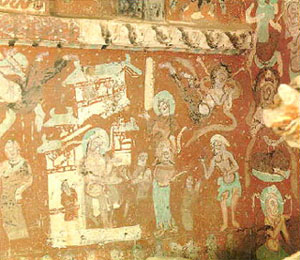 |
WEEK
# 16 - December 12, 2013
The future of the steppes: from nomads to a new Silicon Valley? The dreams and reality.
Readings for Week # 16:
Akçali, Pinar: III. Nation-State Building in Central Asia: A Lost Case? . In Central Eurasia in Global Politics. Conflicts, Security, and Development. Mehdi Parvizi Amineh & Henk Houweling, eds. Brill: Leiden Boston. 2005. Pp. 95-115.
Khazanov, A. M.: Nomads and the State. In Nomads and the Outside World. Cambridge University Press: Cambridge. 1984. Pp. 228-302.
Rall, Ted: I. Lenin Lives! (pp. 22-35). II. The Glory That is Turkmenbashi (pp. 37-56). In Silk Road to Ruin. Is Central Asia the New Middle East? NBM. 2006.
Sneath, David: The Rural and the Urban in Pastoral Mongolia. In Mongols. From Country to City. Floating Boundaries, Pastoralism, and City Life in the Mongol Lands. Ole Bruun and Li Narangoa, eds. NiAS Press. 2006. Pp. 140-161.
Last day to turn in your research paper.
 |
|
December 19, 2013
EXAM!!!
2 hours. You are allowed to bring an index card (3 X 5) with whatever notes you can fit on one side (one side only!) to use during your exam.
|
|
 |
 IMPORTANT!!! IMPORTANT!!!
ADA Statement:
“The University of Utah seeks to provide equal access to its programs, services and activities for people with disabilities. If you will need accommodations in the class, reasonable prior notice needs to be given to the Center for Disability Services, 162 Union Building, 581-5020 (V/TDD). CDS will work with you and the instructor to make arrangements for accommodations.” (www.hr.utah.edu/oeo/ada/guide/faculty)
Faculty Responsibilities:
“All students are expected to maintain professional behavior in the classroom setting, according to the Student Code, spelled out in the Student Handbook. Students have specific rights in the classroom as detailed in Article III of the Code. The Code also specifies proscribed conduct (Article XI) that involves cheating on tests, plagiarism, and/or collusion, as well as fraud, theft, etc. Students should read the Code carefully and know they are responsible for the
content. According to Faculty Rules and Regulations, it is the faculty responsibility to enforce responsible classroom behaviors, and I will do so, beginning with verbal warnings and progressing to dismissal from and class and a failing grade. Students have the right to appeal such action to the Student Behavior Committee.” (www.admin.utah.edu/ppmanual/8/8-12-4.html)
ACADEMIC MISCONDUCT
Please familiarize yourself with the University of Utah CODE OF STUDENT RIGHTS AND RESPONSIBILITIES (“STUDENT CODE”) at www.admin.utah.edu/ppmanual//8/8-10.html
The following is an excerpt from this CODE explaining specific actions, which won’t be tolerated in this class.
“2. “Academic misconduct” includes, but is not limited to, cheating, misrepresenting one's work, inappropriately collaborating, plagiarism, and fabrication or falsification of information, as defined further below. It also includes facilitating academic misconduct by intentionally helping or attempting to help another to commit an act of academic misconduct.
a. “Cheating” involves the unauthorized possession or use of information, materials, notes, study aids, or other devices in any academic exercise, or the unauthorized communication with another person during such an exercise. Common examples of cheating include, but are not limited to, copying from another student's examination, submitting work for an in-class exam that has been prepared in advance, violating rules governing the administration of exams, having another person take an exam, altering one's work after the work has been returned and before resubmitting it, or violating any rules relating to academic conduct of a course or program.
b. Misrepresenting one's work includes, but is not limited to, representing material prepared by another as one's own work, or submitting the same work in more than one course without prior permission of both faculty members.
c. “Plagiarism” means the intentional unacknowledged use or incorporation of any other person's work in, or as a basis for, one's own work offered for academic consideration or credit or for public presentation. Plagiarism includes, but is not limited to, representing as one's own, without attribution, any other individual’s words, phrasing, ideas, sequence of ideas, information or any other mode or content of expression.
d. “Fabrication” or “falsification” includes reporting experiments or measurements or statistical analyses never performed; manipulating or altering data or other manifestations of research to achieve a desired result; falsifying or misrepresenting background information, credentials or other academically relevant information; or selective reporting, including the deliberate suppression of conflicting or unwanted data. It does not include honest error or honest differences in interpretations or judgments of data and/or results.”
The following sanctions will be imposed in this class for a student engaging in academic misconduct:
1. A failing grade for the specific assignment, paper, exam, etc., without possibility to re-write it, re-take it, etc. This academic misconduct will be reported to the Chairman of the Department of Anthropology.
2. The second offense will be sanctioned with a failing grade for the whole course. In such a case, the following rule of the University of Utah CODE OF STUDENT RIGHTS AND RESPONSIBILITIES is applicable and will be followed: “If the faculty member imposes the sanction of a failing grade for the course, the faculty member shall, within ten (10) business days of imposing the sanction, notify in writing, the chair of the student’s home department and the senior vice president for academic affairs or senior vice president for health sciences, as appropriate, of the academic misconduct and the circumstances which the faculty member believes support the imposition of a failing grade.”
3. For more information concerning sanctions for academic misconduct (additional sanctions might be imposed) and your rights and procedures to appeal these sanctions please refer to the aforementioned CODE.
If you need more information and/or explanations please don’t hesitate to contact the instructor.
Ewa
Wasilewska's Home Page
|



